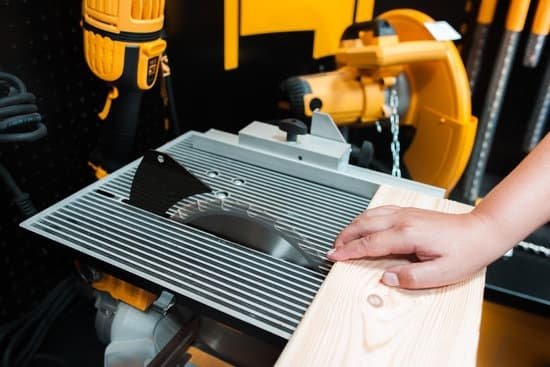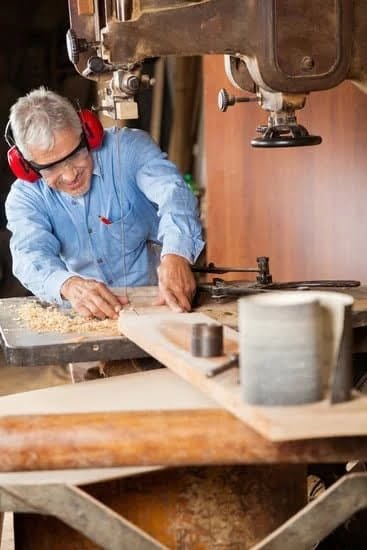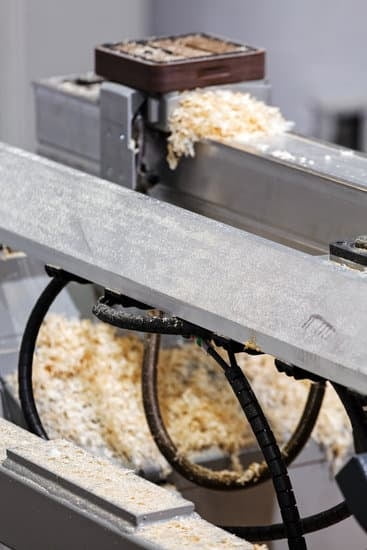Starter Woodworking is an exciting and rewarding hobby that allows individuals to create beautiful, functional pieces from wood. Whether you are a complete beginner or have dabbled in woodworking before, this article will serve as a comprehensive guide to getting started in the craft. In this section, we will define what starter woodworking entails and explore the reasons why it has become such a popular pastime.
Starter Woodworking can be defined as the art of working with wood to create objects using various tools and techniques. It provides individuals with the opportunity to express their creativity while gaining practical skills and knowledge. This introductory section aims to give readers a clear understanding of what starter woodworking involves and the numerous benefits it offers.
There are several reasons why people choose to delve into woodworking as a hobby. First and foremost, it provides an outlet for creativity, allowing individuals to bring their ideas to life through their own hands. Additionally, woodworking can be a deeply meditative practice that helps reduce stress and promotes relaxation. It also offers opportunities for problem-solving and building practical skills, as well as providing a sense of accomplishment when completing projects.
In the following sections of this article, we will delve into essential tools for beginners, safety measures that should be prioritized in woodworking, fundamental techniques, selecting the right wood for specific projects, beginner-friendly project ideas, learning resources available for aspiring woodworkers, troubleshooting tips, and final words of encouragement. So without further ado, let’s dive into the world of starter woodworking.
Essential Tools for Starter Woodworking
Introduction:
Starter woodworking requires a basic set of essential tools to get started. These tools are crucial for completing woodworking projects efficiently and effectively. Whether you’re a DIY enthusiast or looking to develop new skills, having the right tools is vital. In this section, we will provide a detailed list of must-have tools for beginners, offer tips on choosing the right tools within a budget, and recommend where to purchase or find them.
Tools for Starter Woodworking:
When starting out in woodworking, it’s important to invest in quality tools that will last long and deliver reliable results. Here is a list of essential tools for beginner woodworkers:
- Tape Measure: Accurate measurements are key in woodworking projects. A tape measure allows you to measure materials precisely.
- Claw Hammer: A versatile tool used for various purposes such as driving nails, removing them, and general assembly tasks.
- Screwdriver Set: Essential for tightening or loosening screws in your projects.
- Chisels: Used for shaping and carving wood surfaces. It’s recommended to have different sizes for versatility.
- Hand Saw or Circular Saw: A hand saw is great for smaller cutting tasks like crosscuts and rip cuts, while a circular saw is ideal for larger projects.
- Power Drill: An indispensable tool that allows you to drill holes and drive screws with ease.
- Clamps: These hold pieces of wood together securely during gluing or assembly processes.
- Miter Saw or Table Saw: These power tools are ideal for making accurate cuts at various angles or widths.
Choosing Tools on a Budget:
It’s understandable if you have budget constraints when starting out in woodworking. To make the most of your budget, consider these tips:
- Consider purchasing used tools from reputable sources such as yard sales or online marketplaces.
- Look for affordable tool brands that provide good quality at lower prices.
- Prioritize buying multipurpose tools that serve multiple woodworking needs.
- Compare prices across different stores and websites to get the best deals.
Where to Find Tools:
There are several places to find tools for starter woodworking. Local hardware stores often carry a variety of tools suitable for beginners. Additionally, online retailers such as Amazon offer a wide selection of woodworking tools, making it convenient to compare prices and read customer reviews before making a purchase.
Another option is to check pawn shops or second-hand stores for used tools at lower prices. Don’t underestimate the value of community resources like libraries or maker spaces where you may find tools available for borrowing or renting. By exploring these options, you can save money while still acquiring the necessary tools for your woodworking projects.
Safety Measures in Starter Woodworking
Woodworking can be a rewarding and fulfilling hobby, but it is crucial to prioritize safety while working with tools and materials. Whether you are a beginner or an experienced woodworker, taking the necessary precautions can help prevent accidents and injuries. In this section, we will discuss the importance of safety in woodworking, explain and demonstrate safety equipment and measures, and provide tips on how to create a safe working environment.
The Importance of Prioritizing Safety
Before diving into any woodworking project, it is essential to understand the importance of safety. Power tools and sharp cutting edges can pose serious hazards if not used properly. Accidents can result in severe injuries that could have been prevented with proper safety measures. By prioritizing safety from the beginning, you can ensure a safer and more enjoyable woodworking experience.
Safety Equipment and Measures
In order to maintain a safe woodworking environment, there are several items of safety equipment that every beginner should have. One of the most crucial pieces of equipment is protective eyewear. Safety glasses or goggles will protect your eyes from flying wood debris or splinters. Another important item is hearing protection since power tools can produce loud noises that may damage your hearing over time. Earplugs or earmuffs are recommended for reducing noise exposure.
Additionally, it is crucial to protect your hands with gloves when handling sharp tools or materials such as wood splinters that could cause cuts or abrasions. Non-slip footwear should also be worn to avoid trips or falls while working in the workshop.
Creating a Safe Working Environment
Aside from wearing appropriate safety gear, creating a safe working environment is equally important for starter woodworking. Keep your workspace clean and organized to minimize potential hazards such as tripping over cluttered areas or stepping on misplaced tools. It is also recommended to have proper lighting in your workshop so you can clearly see what you are working on and avoid mistakes or accidents.
Furthermore, ensure that your tools are in good working condition and properly maintained. Dull blades can be dangerous and cause kickbacks, so make sure to keep them sharp. Additionally, always follow the manufacturer’s instructions for tool use and pay attention to warning labels.
By being proactive about safety measures, investing in the necessary safety equipment, and maintaining a clean and organized workspace, you can greatly reduce the risk of accidents and injuries while enjoying the craft of woodworking.
Basic Woodworking Techniques for Starters
Woodworking involves a variety of techniques that are essential for beginners to learn and master. In this section, we will introduce you to some fundamental skills in woodworking and provide step-by-step instructions on commonly used techniques like measuring, sawing, and sanding.
- Measuring: Accurate measurements are crucial in woodworking to ensure your projects fit together properly. Use a tape measure or ruler to measure the dimensions of your wood pieces before cutting or joining them. Remember to double-check your measurements before making any cuts.
- Sawing: Sawing is one of the most fundamental and common techniques in woodworking. A handsaw or a powered saw can be used depending on the project and personal preference. When sawing, use controlled and steady strokes, keeping your eye on the cut line to ensure accuracy.
- Sanding: Sanding is essential for creating smooth surfaces and removing rough edges from your woodwork projects. Start with coarse-grit sandpaper to remove any imperfections or unevenness, then progress to finer-grit sandpaper for a smoother finish. Be sure to sand with the grain of the wood for best results.
- Joinery: Joinery refers to connecting pieces of wood together securely. Common joinery techniques for starters include butt joints (where two pieces of wood meet at right angles) and pocket-hole joinery (using screws in pre-drilled holes). Practice these basic joinery techniques before moving onto more complex ones.
- Drilling: Drilling is necessary for making holes in wood to insert screws or fasteners. Use drill bits of appropriate sizes based on the desired hole diameter, and refer to the manufacturer’s instructions for optimal drilling speed and technique.
- Gluing: Glue is often used alongside joinery techniques to strengthen connections between wood pieces. Apply an even layer of woodworking glue along the joint before clamping the pieces together firmly until the glue dries.
By mastering these basic woodworking techniques, you will be equipped with the foundation to tackle a wide range of beginner projects. Remember to practice each technique with care and precision, and don’t be discouraged by initial mistakes. With time and practice, your skills will improve, allowing you to take on more advanced woodworking projects.
Selecting the Right Wood for Your Starter Woodworking Projects
When starting out in woodworking, one of the key decisions you’ll need to make is selecting the right type of wood for your projects. The type of wood you choose will greatly impact the final appearance, durability, and ease of working with your creations. In this section, we will provide an overview of different types of wood and their properties, offer tips on choosing the right wood for specific projects, and suggest where beginners can find quality wood.
There are several popular types of wood used in woodworking, each with its own unique characteristics and advantages. Softwoods like pine and cedar are often favored by beginners as they are readily available and more affordable compared to hardwoods. Softwoods are also easier to work with due to their lighter weight and generally have a straight grain pattern.
Hardwoods such as oak, maple, and walnut are prized for their strength, durability, and beautiful grain patterns. They may require more skill and specialized tools to work with but can result in breathtaking finished pieces.
When selecting wood for your starter woodworking projects, consider both the aesthetics and functionality of the wood. For example, if you’re planning to build a decorative item that requires intricate carving or shaping, a softer wood like basswood or butternut may be more suitable. On the other hand, if you’re creating furniture or items that need to withstand heavy use or moisture exposure, opting for a hardwood like teak or mahogany would be wise.
To ensure you’re working with high-quality wood that is free from defects and suitable for your project needs, it’s important to source your materials from reputable suppliers. Local home improvement stores often stock a variety of woods suitable for beginners’ projects. Additionally, specialty lumberyards or online retailers dedicated to woodworking supplies can offer a wider selection and may even provide guidance on choosing the right type of wood based on your project requirements.
| Type of Wood | Advantages |
|---|---|
| Softwoods (e.g., pine, cedar) | – More affordable
|
| Hardwoods (e.g., oak, maple, walnut) | – Strength and durability
|
Beginner-Friendly Woodworking Projects
Easy and practical project ideas for beginners
When starting out in woodworking, it can be overwhelming to tackle complex projects right away. That’s why it’s important for beginners to start with projects that are simple and easy to complete. This helps build confidence and allows you to practice basic woodworking skills. Here are a few beginner-friendly project ideas to get you started:
- Cutting Board: A cutting board is a great first project for beginners because it only requires a few basic tools and materials. You can choose different types of wood for the board and experiment with different designs or patterns.
- Tool Caddy: Organize your tools with a handy tool caddy made from wood. This project is perfect for practicing measuring and cutting wood, as well as learning how to create joints using screws or nails.
- Picture Frame: Create personalized picture frames using wood scraps or reclaimed wood. This project allows you to practice mitered corners, sanding, and finishing techniques.
Detailed instructions and materials needed for each project
Each beginner-friendly woodworking project requires specific materials and tools. Here is a breakdown of what you will need for the projects mentioned above:
- For the cutting board, you will need a hardwood like maple or walnut, a saw, sandpaper, food-safe finish, clamps, and a router (optional).
- To make the tool caddy, gather plywood or pine boards, measuring tape, pencil, circular saw or hand saw, drill/driver, screws or nails, sandpaper or sander, finish (paint or stain), and handles (optional).
- For the picture frame project, collect wood scraps or reclaimed wood in your desired dimensions, miter saw or miter box with backsaw/japanese pullsaw/hand saws with fine-tooth crosscutting capability,a tape measure,ruler,pin nailer/hammer & small finishing nails, glue, sandpaper or sander, finish (paint or stain), miter clamps (optional).
Inspiring examples of completed beginner woodworking projects
Looking at successful completed projects can be a great source of inspiration for beginners. Here are a few examples of what you can create with your newfound woodworking skills:
- A beautifully crafted cutting board made from different types of wood, showcasing intricate patterns and designs.
- A rustic tool caddy with various compartments and a handle, perfect for organizing all your essential tools in one place.
- A unique picture frame made from reclaimed wood, adding character to any photograph or artwork it holds.
Remember that each project should be personalized to your liking and skill level. Don’t be afraid to experiment and add your own creative touch to the design. As you gain more experience and confidence in woodworking, you can gradually challenge yourself with more complex projects.
Learning Resources for Starter Woodworkers
For those new to woodworking, there are various learning resources available to help you develop your skills and knowledge. Whether you prefer books, websites, online tutorials, or hands-on classes, these resources can provide valuable guidance and support as you embark on your woodworking journey.
Books are a great starting point for beginner woodworkers. They often offer comprehensive information on tools, techniques, and projects. Some recommended books for starter woodworkers include “The Complete Manual of Woodworking” by Albert Jackson and David Day, “Woodworking Basics: Mastering the Essentials of Craftsmanship” by Peter Korn, and “The Joint Book: The Complete Guide to Wood Joinery” by Terrie Noll.
In addition to books, there are many websites and online tutorials available that provide step-by-step instructions, project ideas, and tips for beginner woodworkers. Websites like Family Handyman (www.familyhandyman.com) and Woodsmith (www.woodsmith.com) offer a wide range of articles and videos geared towards beginners. Online platforms such as YouTube also have numerous channels dedicated to woodworking tutorials.
For those who prefer a more hands-on approach, local classes or workshops can be a valuable resource. Many community colleges or adult education centers offer woodworking classes specifically designed for beginners. These classes often provide an opportunity to learn from experienced instructors, use professional tools and equipment, and interact with fellow woodworkers.
Joining woodworking communities or forums is another great way to connect with other beginners and experienced woodworkers alike. Online communities such as Reddit’s r/woodworking or forums like SawdustZone (www.sawdustzone.org) allow you to ask questions, seek advice, share your projects, and learn from others in the woodworking community.
Overall, it’s important to take advantage of the learning resources available to you as a starter woodworker. Whether through books, websites, classes or online communities, these resources can provide you with the knowledge and inspiration needed to enhance your skills and tackle new projects.
Troubleshooting and Common Challenges in Starter Woodworking
One of the most common challenges that beginners may encounter in starter woodworking is working with uneven or warped wood. When you’re just starting out, it can be frustrating to find that the wood you purchased is not perfectly flat or straight. However, there are a few ways to troubleshoot this issue. First, you can try using clamps to hold the wood in place while you work on it.
This can help to flatten it out and make it more manageable. Another option is to use a jointer or planer to smooth out any uneven surfaces. Finally, if the piece of wood is too warped to work with, you may need to replace it with a new one.
Another common challenge for beginners in woodworking is achieving clean and smooth cuts. When using saws or other cutting tools, it’s important to make sure that your cuts are accurate and precise. One way to overcome this challenge is by practicing your cutting techniques on scrap pieces of wood before working on your actual project.
Additionally, using sharp blades and properly adjusting your saws can greatly improve the quality of your cuts. It’s also important to have a steady hand and take your time when making cuts.
Lastly, another common challenge for beginner woodworkers is understanding how much pressure to apply when sanding their projects. Applying too much pressure can cause uneven surfaces and remove too much material, while applying too little pressure may not achieve the desired level of smoothness.
To overcome this challenge, it’s important to start with lighter pressure and gradually increase it until you reach the desired sanding effect. Experimenting with different grits of sandpaper can also help beginners understand how much pressure should be applied at each stage of the sanding process.
Overcoming challenges in starter woodworking requires patience, practice, and persistence. Remember that making mistakes is part of the learning process, so don’t be discouraged if things don’t go perfectly right away. By troubleshooting common issues like working with uneven wood, achieving clean cuts, and applying the right amount of pressure when sanding, you’ll gradually become more skilled and confident in your woodworking abilities.
Keep practicing, seeking advice from experts or fellow woodworkers, and don’t be afraid to experiment with different techniques. With time and dedication, you’ll be able to tackle more complex projects and enjoy the satisfaction of creating beautiful pieces of woodwork.
Final Thoughts and Encouragement
In conclusion, starter woodworking is a rewarding and fulfilling hobby that offers numerous benefits. Not only does it allow you to create beautiful and functional pieces from scratch, but it also provides a sense of accomplishment and a creative outlet.
Throughout this article, we have explored the essential tools needed to get started, emphasized the importance of safety measures, introduced basic woodworking techniques, discussed the selection of the right wood for projects, provided beginner-friendly project ideas, highlighted learning resources and troubleshooting tips, and now it’s time to wrap up with some final thoughts.
Starter woodworking is an art form that requires patience, practice, and dedication. It may seem overwhelming at first, but with each project you complete and each skill you master, your confidence will grow. Remember to take your time and enjoy the process. Mistakes are inevitable in any new endeavor, so don’t get discouraged if things don’t turn out perfectly at first. Instead, view them as opportunities to learn and improve your skills.
One of the greatest joys of starter woodworking is the ability to bring your ideas to life. Whether you’re crafting a small shelf or building a larger piece of furniture, there’s something incredibly satisfying about seeing your vision take shape through your own hands. So embrace the challenge and relish in the satisfaction that comes with creating something unique.
Lastly, don’t forget that learning is a lifelong journey. As you continue to build on your skills and gain experience in starter woodworking, consider joining local classes or workshops or becoming part of online communities or forums where you can connect with fellow woodworkers who can offer guidance and support along the way.
So go forth with courage and curiosity. Starter woodworking has endless possibilities waiting for you. Embrace this craft as a way to express yourself creatively while cultivating new skills. Enjoy the journey as you discover new techniques, overcome challenges, and ultimately find joy in working with wood. Good luck on your woodworking adventures.
Frequently Asked Questions
What to build beginner woodworking?
For beginners in woodworking, it’s important to start with simple projects that allow you to develop foundation skills. Building a basic workbench or a small shelf are great starting points. These projects will help you understand fundamental techniques such as measuring, cutting, drilling, and sanding.
It is also advisable to work with softer woods like pine or plywood initially, as they are easier to work with and don’t require specialized tools. As you gain confidence and proficiency, you can gradually progress to more complex projects.
Can I teach myself woodworking?
Yes, it is absolutely possible to teach yourself woodworking. Many skilled woodworkers have learned the craft through self-study and practice. There are abundant resources available for learning woodworking online and in books.
Websites, forums, and YouTube channels offer tutorials on various techniques and projects that cater to different skill levels. Starting with simpler projects and gradually working your way up will allow you to learn at your own pace and build the necessary skills over time. Patience, perseverance, and a willingness to make mistakes while learning are key aspects of teaching yourself woodworking.
How do I get into woodworking with no experience?
Getting into woodworking with no prior experience requires a few steps to ensure a smooth start. First, familiarize yourself with the basic tools needed for woodworking such as a saw, drill, sander, chisels, squares, and clamps.
Next, spend some time researching different types of wood and their characteristics so that you understand how they behave during different processes like cutting or joining pieces together. It’s also crucial to practice safety precautions by wearing protective gear such as safety glasses and gloves when working with tools.

Hi everyone! I’m a woodworker and blogger, and this is my woodworking blog. In my blog, I share tips and tricks for woodworkers of all skill levels, as well as project ideas that you can try yourself.





